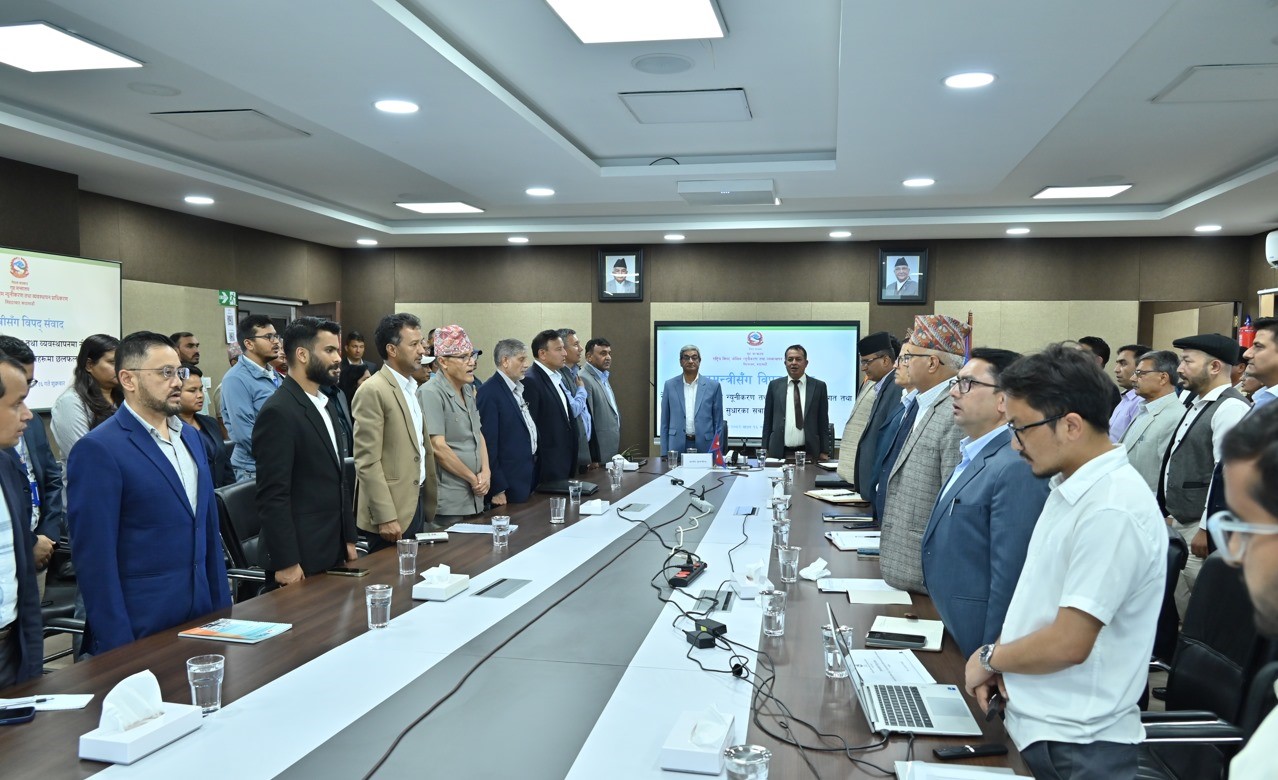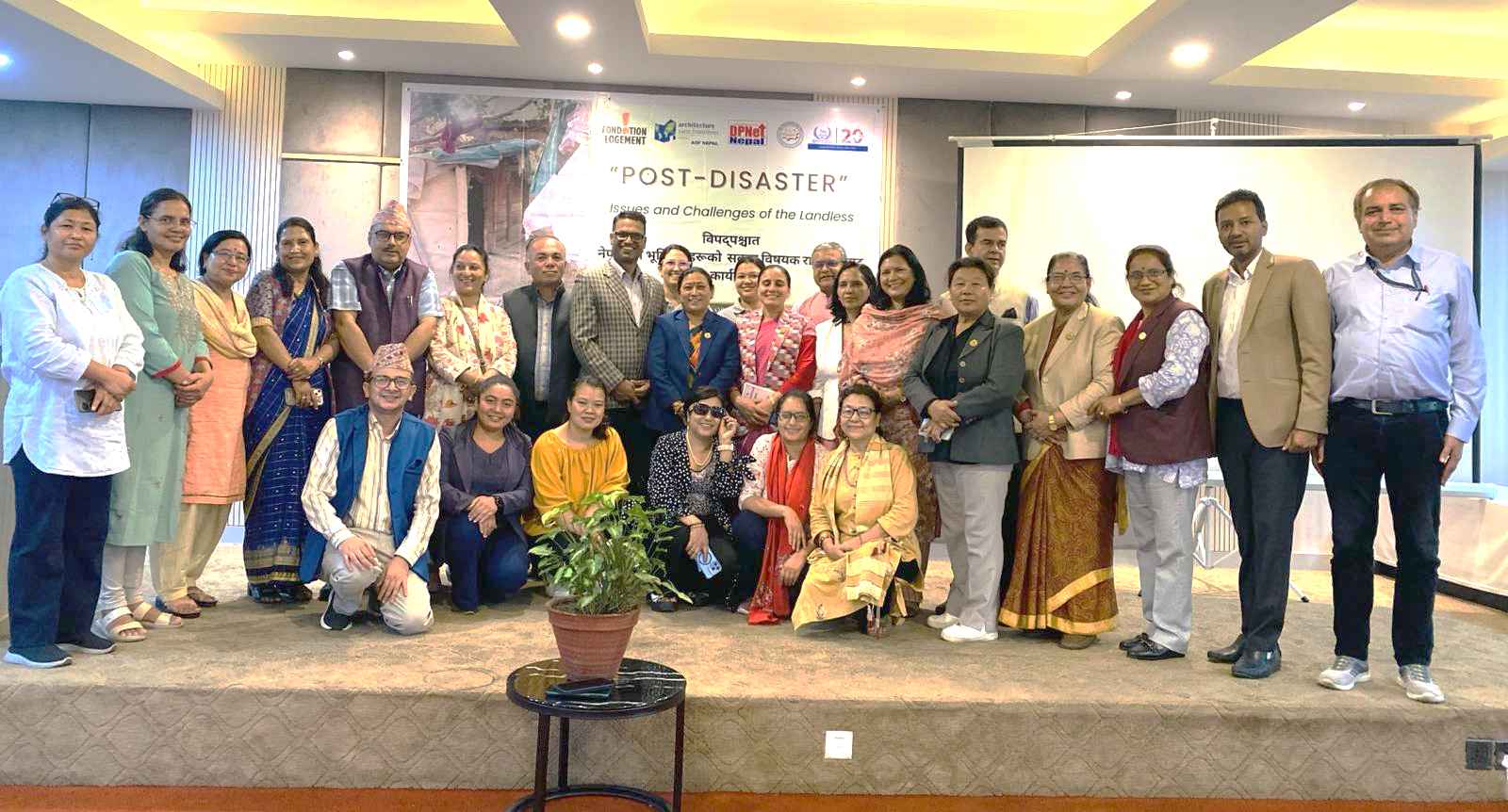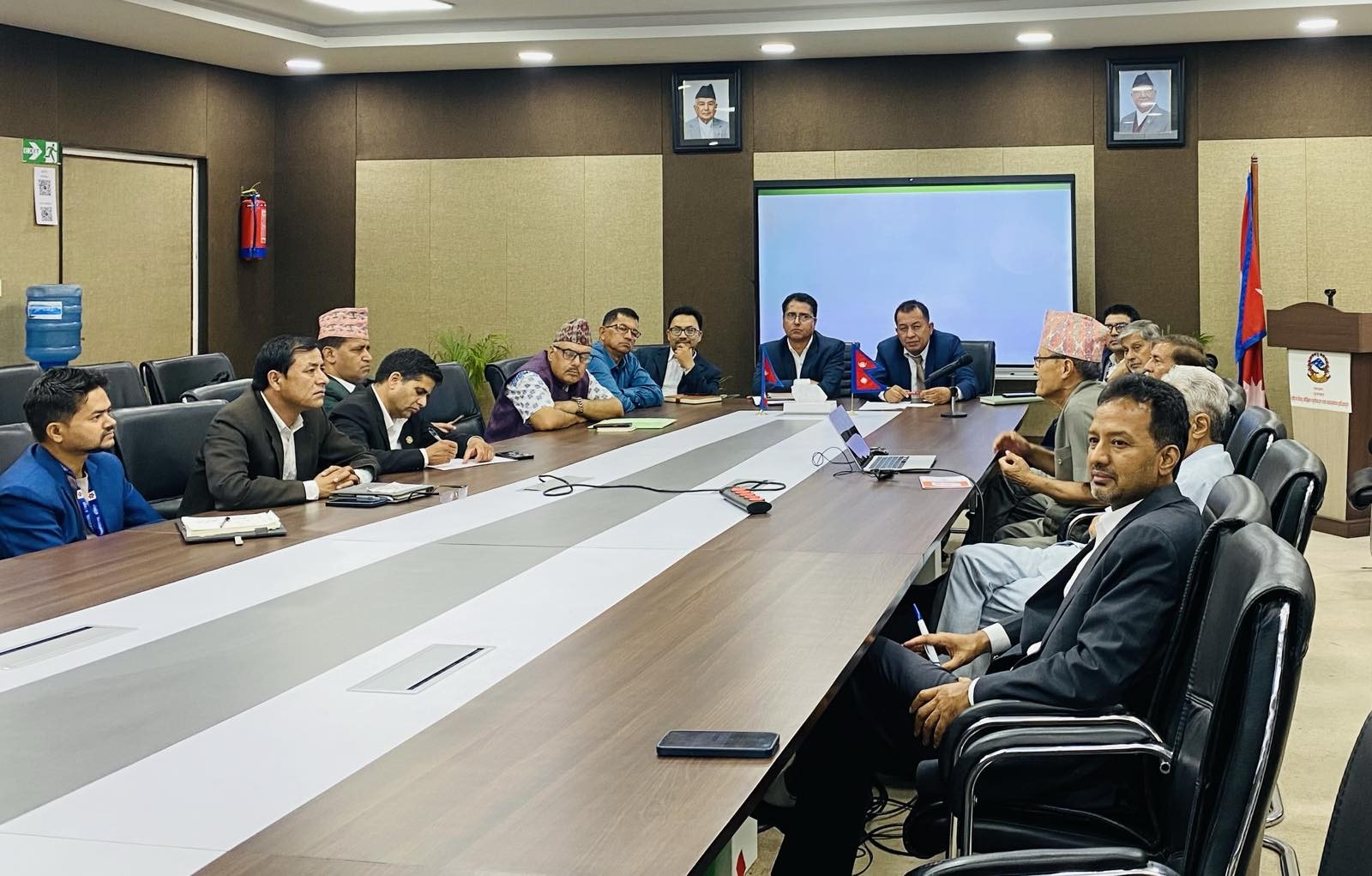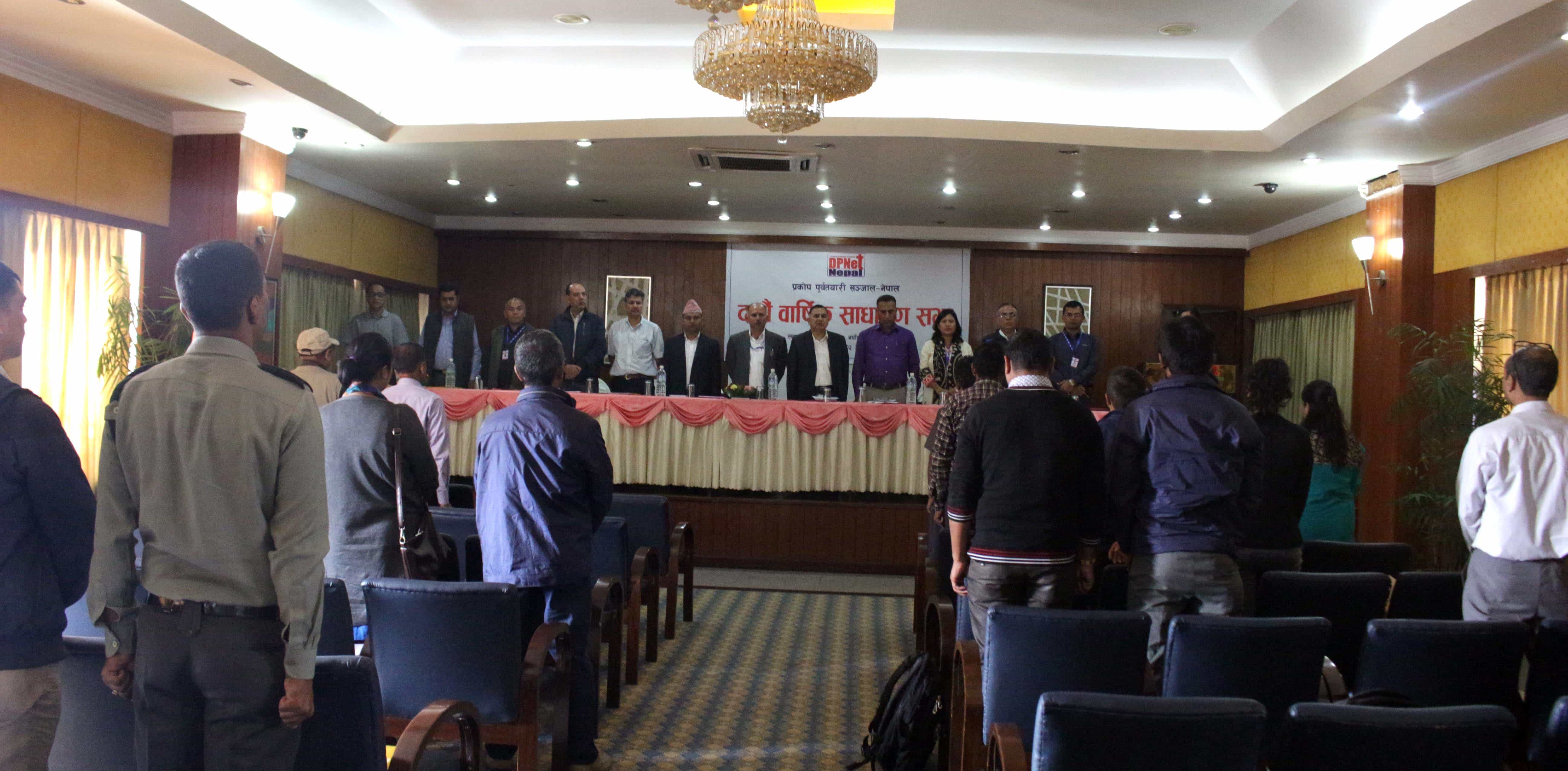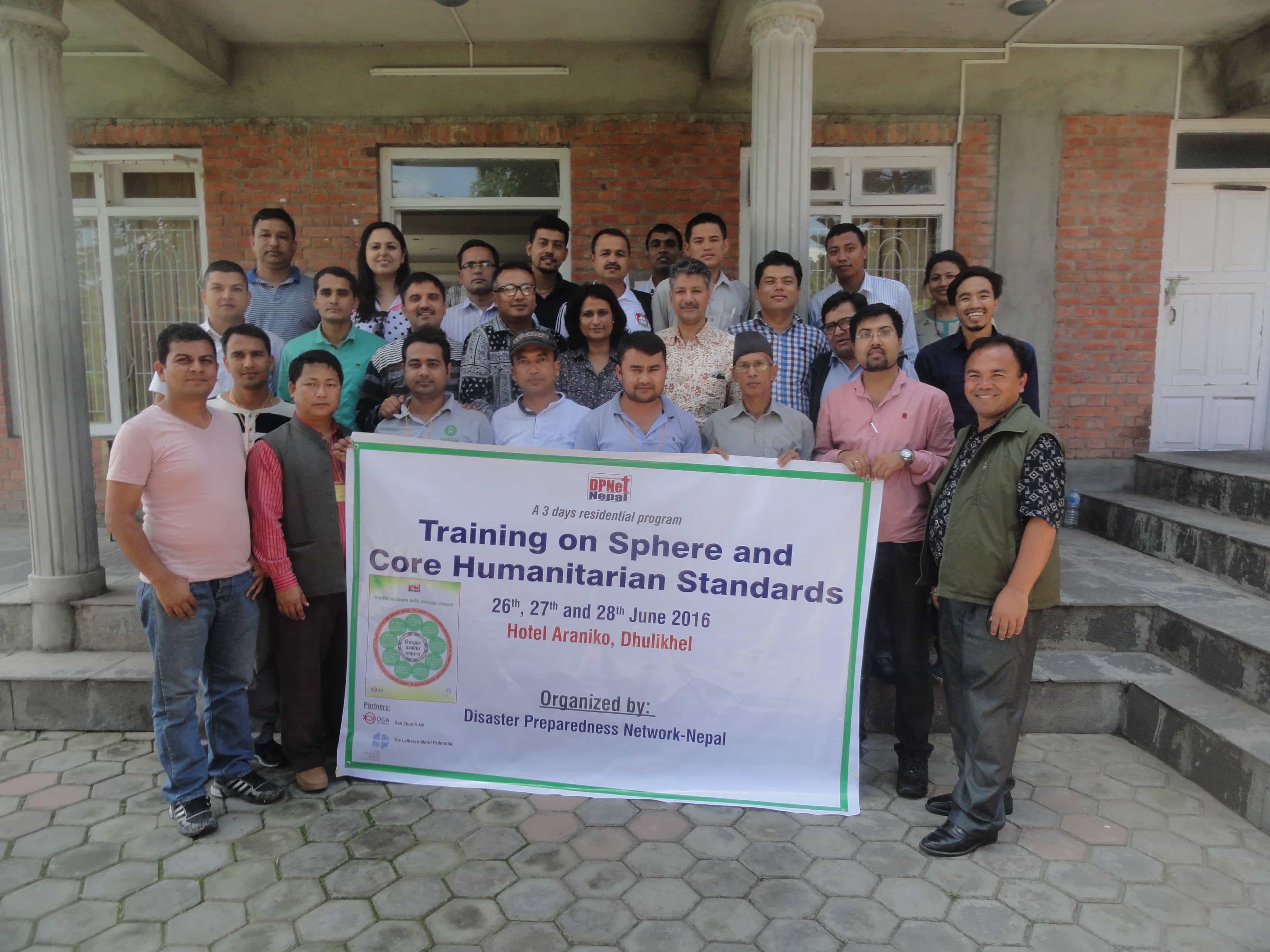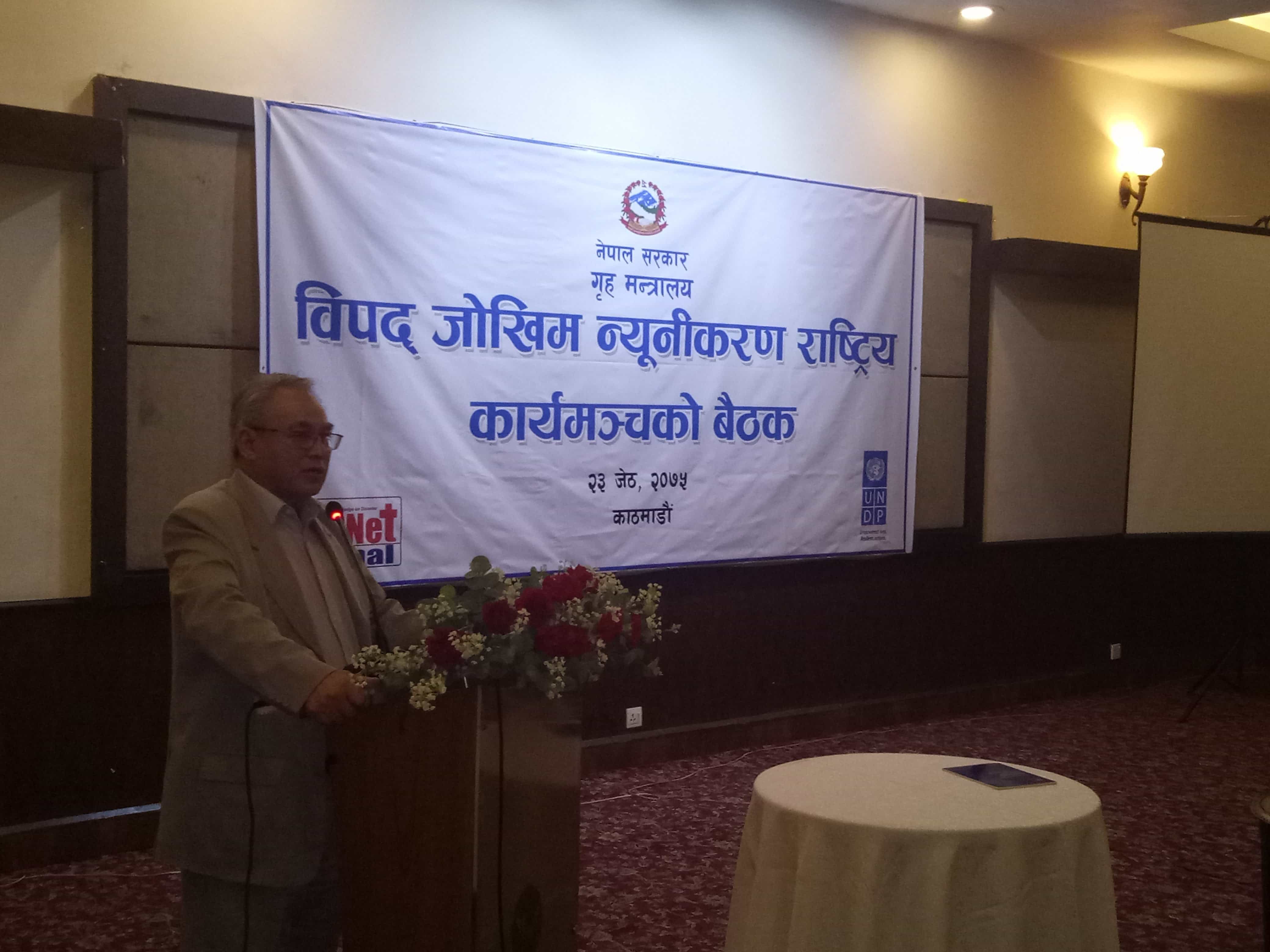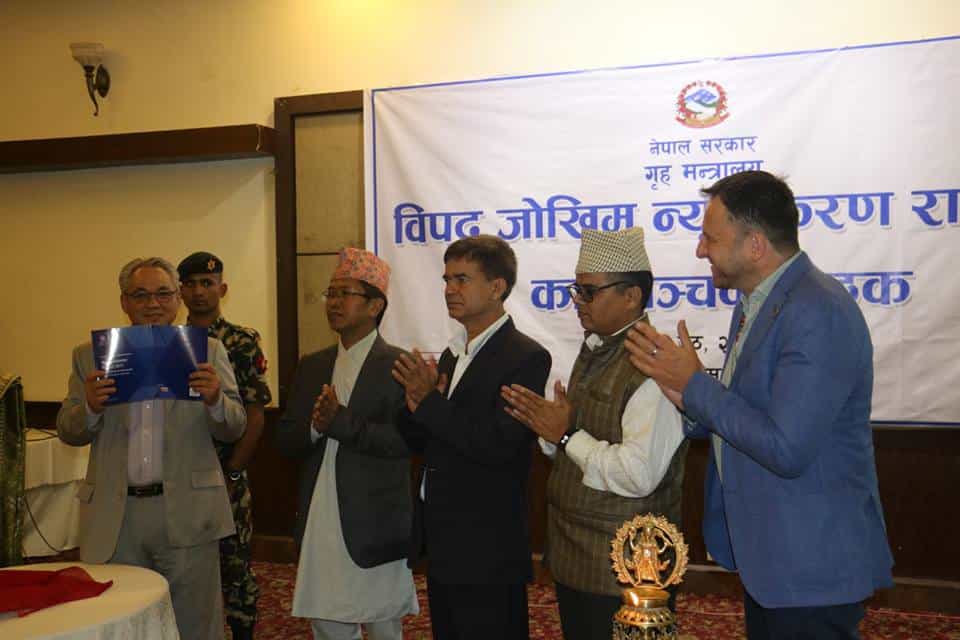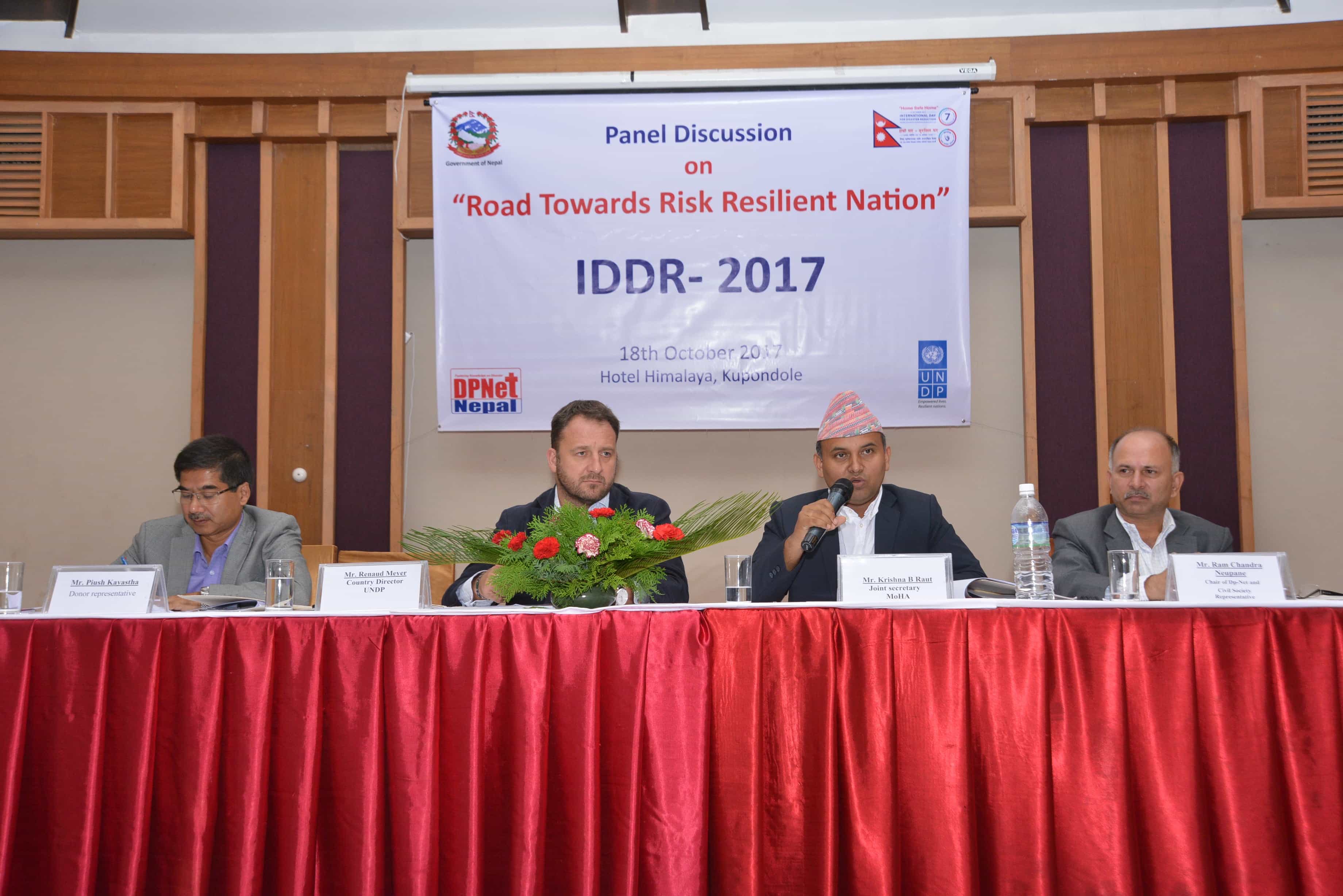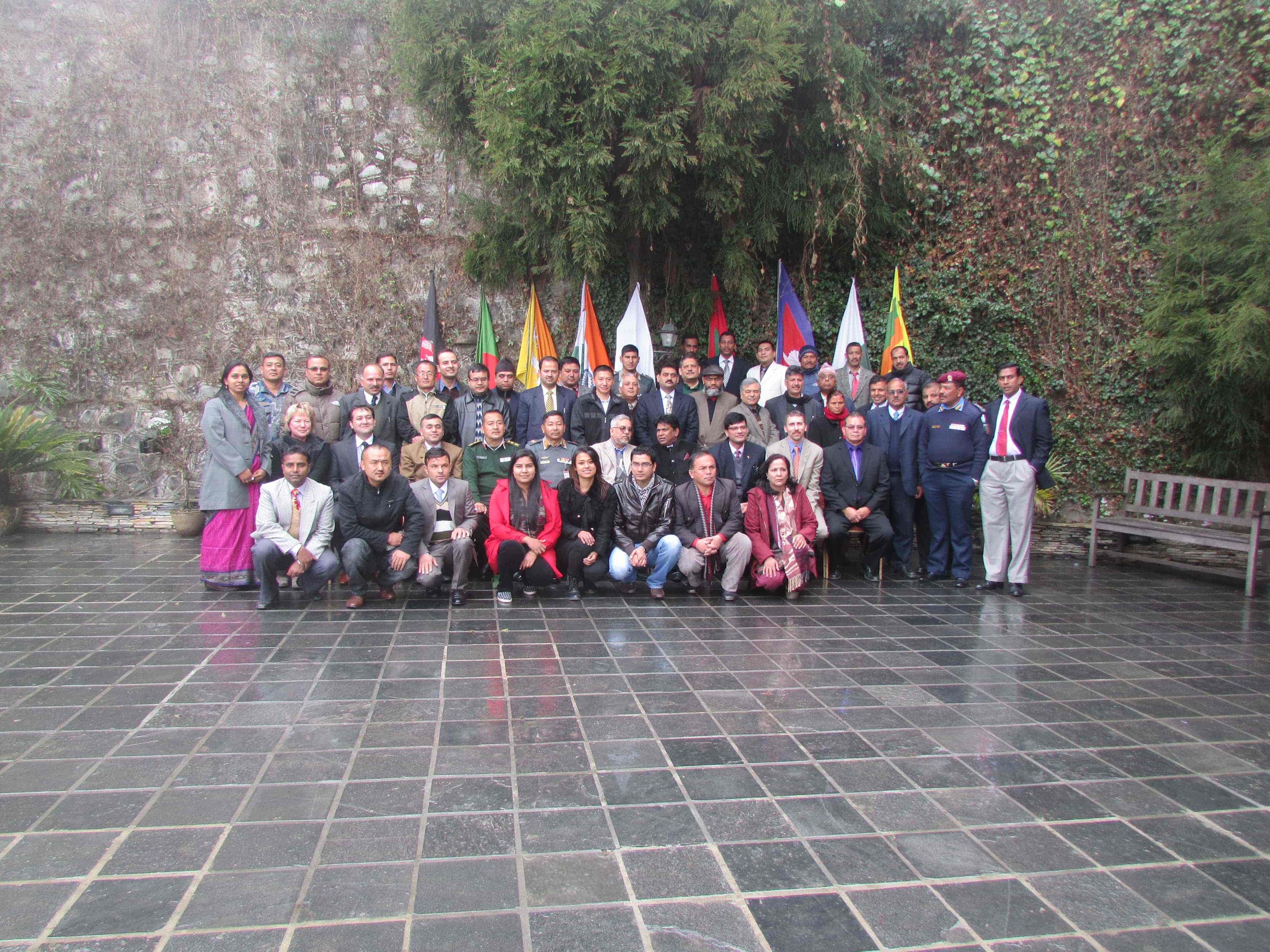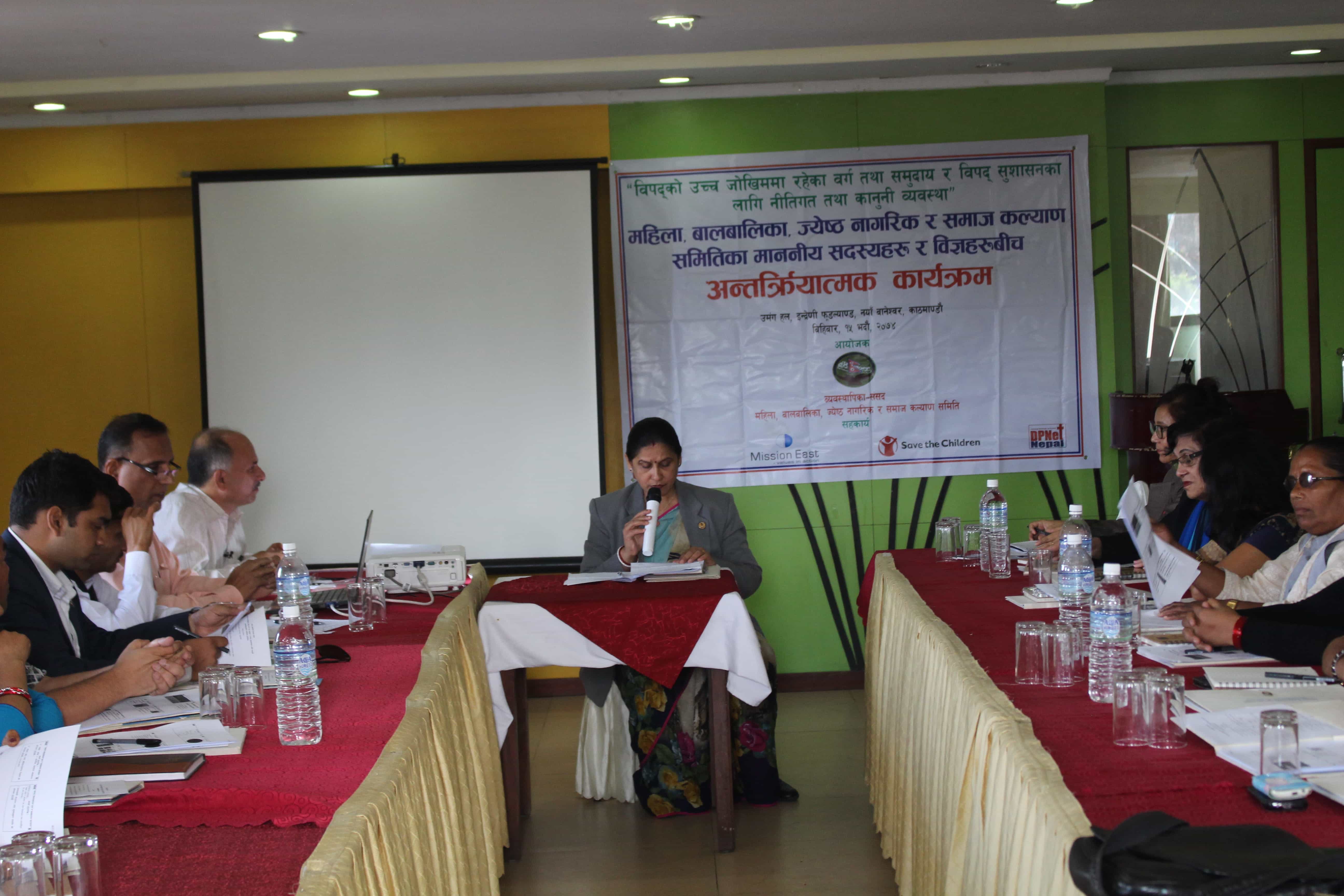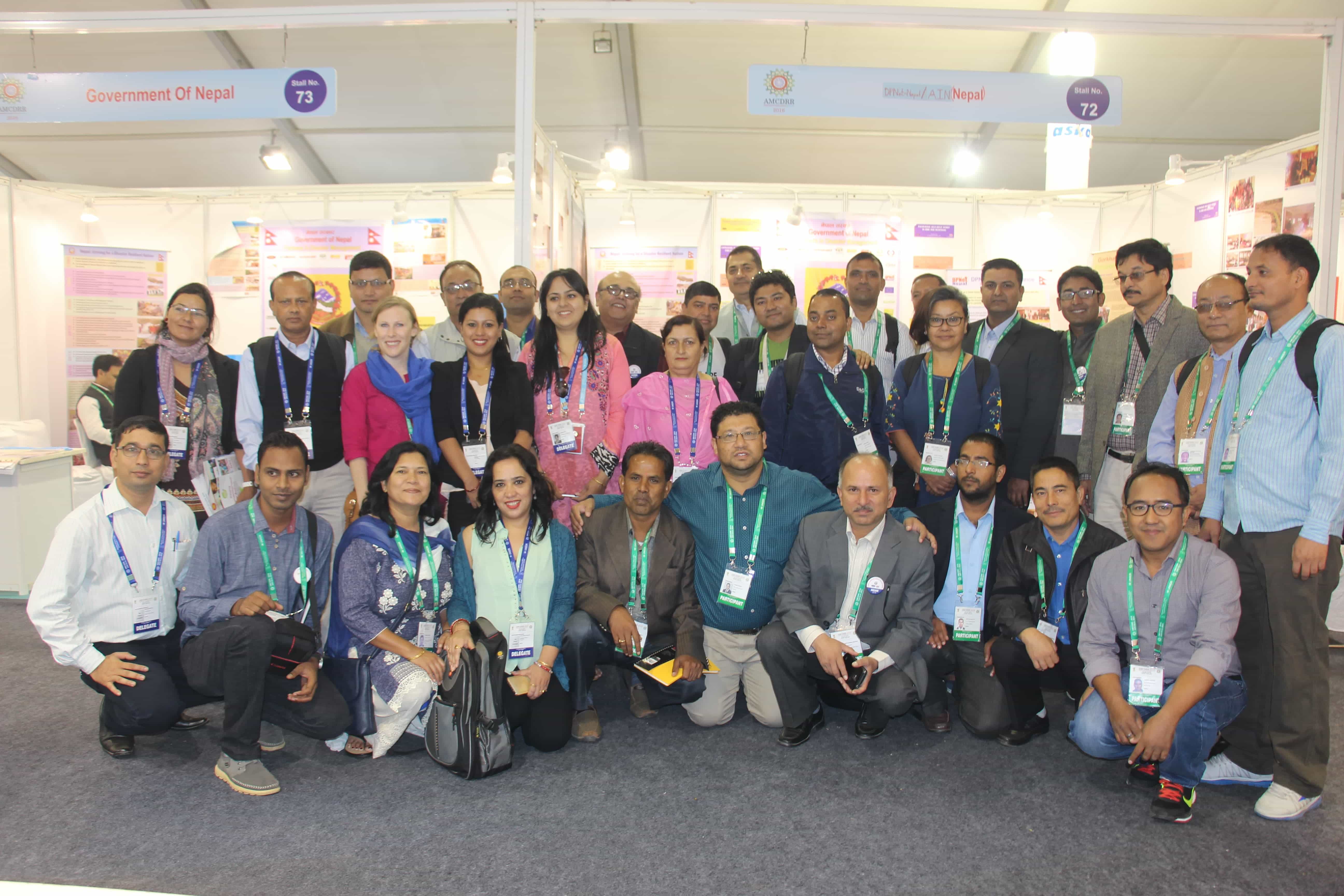Interaction Program on Provincial Disaster Risk Reduction at Bagmati Province
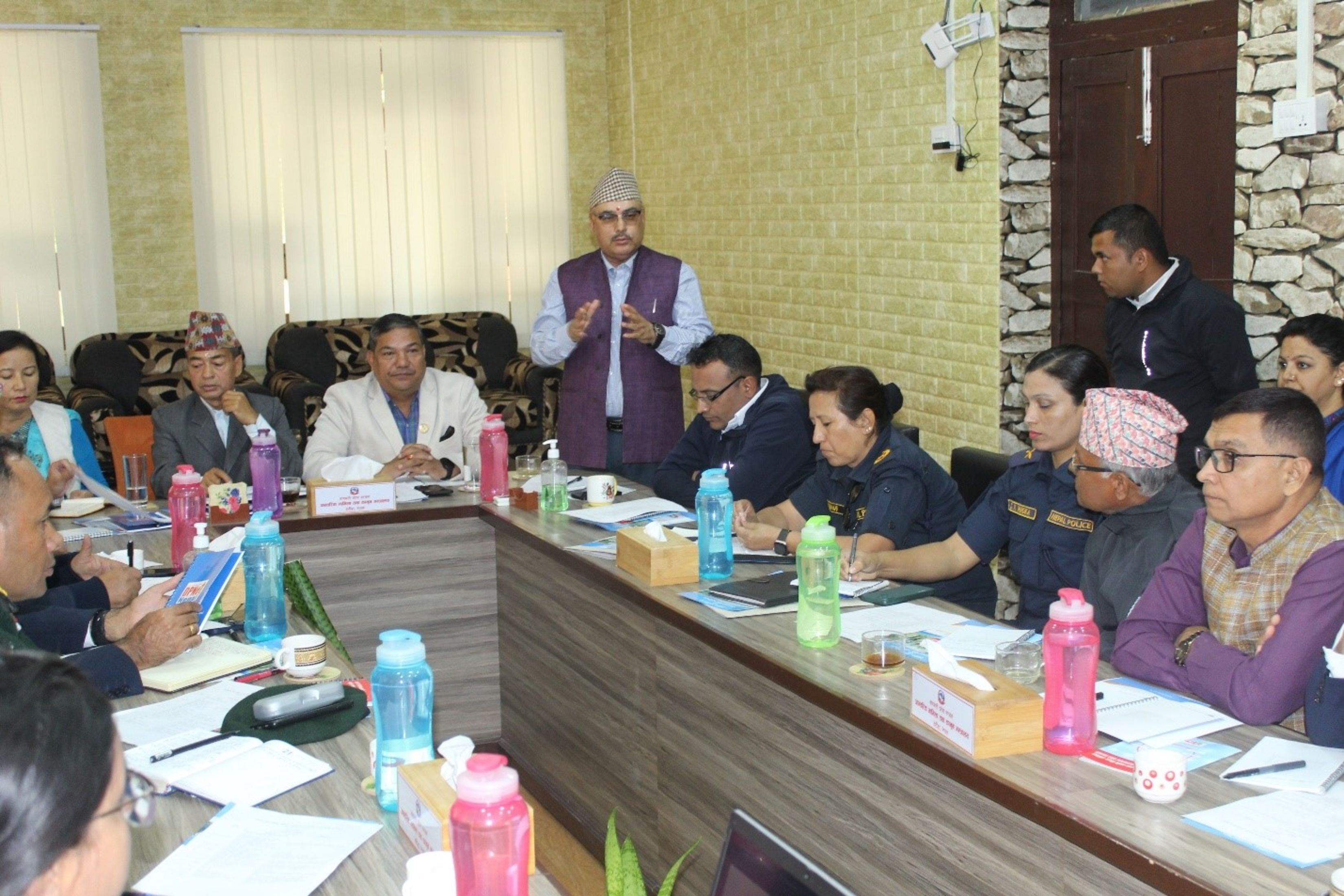
On November 23, 2023, the Ministry of Internal Affairs and Law, Bagmati Province (MoIAL), led an event titled 'Interaction Program on Provincial Disaster Risk Reduction.' The event, organized by DPNet-Nepal and financially and technically supported by USAID’s Tayar Nepal, aimed to enhance Disaster Risk Governance in Bagmati Province, Nepal. The primary focus of the interaction was to evaluate the effectiveness and efficiency of acts, policies, and follow-ups related to DRR at the provincial level. Mr. Dhruba Gaida, Province Secretary of MoIAL, Bagmati Province, chaired the event, with Hon. Ram Krishna Chitrakar, Minister of Industry, Commerce, Land Management and Administration, Bagmati Province, serving as the Chief Guest, and Ms. Meena Lama, Mayor of Hetauda Sub Metropolitan City as the special guest. Mr. Surya Prasad Sedai, Chief District Officer of Makwanpur District, along with province secretaries from different ministries of Bagmati Province, Mr. Surya Bahadur Thapa, Chair of DPNet Nepal, and representatives from the Nepal Army, Nepal Police, Armed Police Force, Nepal Red Cross Society, and NGOs operating in Bagmati Province were among the guests present at the event.
Mr. Deepak Neupane, Under Secretary of MoIAl started the program with a warm welcome to all the attendees of the program.
Mr. Kedar Neupane, Former Secretary of the Government of Nepal and Advisor of DPNet Nepal explained the objectives of the program to the distinguished guests and participants. Exploring into the historical context summarized in the Dabik Prakop Ain, he highlighted the traditional belief that attributed disasters to sins. Drawing insights from the Gorkha Earthquake and the COVID-19 pandemic, He explored various aspects of disaster management. Mr. Neupane underscored that despite the existence of policies, governance has not significantly improved since 1990 BS, emphasizing the weak implementation of these policies. Reflecting on the recurrent nature of disasters, he emphasized the critical need to prioritize preparedness alongside rescue efforts. Drawing attention to recent incidents like the Uttarakhand tunnel collapse in India and past tornado in Bara, he emphasized the unpredictable nature of new disasters, presenting ongoing challenges. He advocated for collaboration among the three tiers of government to jointly address different phases of disaster risk reduction mainly focusing on preparedness. Mr. Neupane stressed the integration of development and DRR, emphasizing the efficient utilization of existing resources, adoption of enhanced technology, and capacity building for technocrats. He highlighted the importance of mock drills and preventive measures such as fire extinguishers, hydrants, and fire engines. Additionally, he recommended that local governments strictly enforce building bylaws and codes to mitigate the impact of disasters. Mr. Neupane emphasized the establishment of a multi-stakeholder Provincial Platform for Disaster Risk Reduction (PPDRR) in Bagmati Province to facilitate effective collaboration and coordination in DRR initiatives.
Mr. Surya Bahadur Thapa, Chair of DPNet, began his presentation with an overview of DPNet Nepal's history, which was established in 1996 A.D. He described DPNet as an umbrella organization comprising members from I/NGOs, and UN agencies, all working in the field of DRR. DPNet also serves as the secretariat office for the National Platform for DRR. As a networking organization, DPNet organizes various International, National, and Regional Conferences in the field of DRR.
During his presentation, Mr. Thapa outlined DPNet's operational focus areas, emphasizing key pillars such as policy advocacy, knowledge management, capacity building, and coordination and networking. He shared insights into various publications released by DPNet Nepal and presented a graphical representation of integrated disaster incidents from 2070 to 2079 B.S. and highlighted the major five disaster events in the year 2079 B.S., categorized based on the number of incidents as fire, landslide, animal attack, thunderbolt, and forest fire. Mr. Thapa provided a detailed list of policy provisions relevant to disaster management, including legislative documents such as the Constitution of Nepal, the Disaster Risk Reduction and Management Act of 2074, the Disaster Risk Reduction and Management Regulation of 2076, and the Local Government Operation Act of 2074. Other significant policies mentioned encompassed the Urban Planning & Development Act, the Building Code for Nepal, Sustainable Development Goals (2015-2030), and the Environment Conservation Act of 2076.
In the overview of the September 5, 2023 discussion, Mr. Thapa focused on defining provincial roles based on the type of disaster, collaborative training between security forces and citizens, cooperation between the government and private sectors in data management and resource utilization, and the mobilization of local resources and knowledge. Mr. Thapa also outlined the historical context of the National Platform for Disaster Risk Reduction (NPDRR) formation in Nepal, dating back to 2069 B.S., guided by UN directives. He highlighted the collaborative role of NPDRR at the national, regional, and international levels and advocated for the establishment of PPDRR in Bagmati Province.
Mr. Deepak Prasad Neupane, Under Secretary at MoIAL, Bagmati Province, provided an overview of the disaster situation in Bagmati Province over the past decade, encompassing incidents such as floods, landslides, fires, and earthquakes. He particularly highlighted the significant impact of fire-related disasters across all districts, coupled with an increasing frequency of floods and landslides. Mr. Neupane underscored the importance of collaboration among the three tiers of government and non-government sectors to ensure effective disaster management. Illustrating the support extended by MoIAL in a recent landslide event in Gaurishankar Rural Municipality to affected families and the local government, Mr. Neupane emphasized Bagmati Province's dedication to disaster management. He specifically focused on the development and implementation of various plans and guidelines, including the Bagmati Province Monsoon Preparedness and Response Action Plan 2023, the Bagmati Province Environment Protection Act 2020, the Contingency Plan for the Housing Sector 2022, Bagmati Province Disaster Management Act 2018, and the Province Disaster Management Policies and Strategic Action Plan 2019-2030, among others.
Mr. Neupane detailed that, following the province's fund mobilization guidelines, funds are being allocated to all districts and hazard-prone local levels not only for post-disaster rescue and relief but also for preparedness. He also discussed awareness campaigns, and relief allocations for private housing reconstruction by the provincial government, and highlighted challenges, including coordination gaps among the three tiers of government, proper data management, coordination among agencies and governments, limited human and economic resources, and the necessity of integrating disaster management with development initiatives.
Mr. Mahendra Bdr. Magar, Executive Director of CCDN, emphasized the importance of risk mapping for the province. He suggested that each agency allocate a specific percentage of funds toward DRR. Illustrating with an example of controlling landslides through bamboo plantations, he emphasized the use of indigenous technologies which will not only serve as local-level disaster mitigation but also as income-generating activities.
Mr. Tirtha Raj Bhattarai, Province Secretary of the Ministry of Labor, Employment, and Transport in Bagmati Province, shared his experience managing a fire disaster event during his tenure as the Chief District Officer of Morang district. He highlighted the effective use of the airport's fire engine and stressed the importance of sharing resources among government agencies during disaster events. Mr. Bhattrai emphasized the necessity of collaborative efforts among the three tiers of government and commended the MoIAL for developing frameworks for DRR. He requested all agencies to focus on the implementation of these legal frameworks.
Mr. Surya Prasad Sedai, Chief District Officer of Makwanpur District, shed light on the diverse activities carried out by the District Administrative Office and District Disaster Management Committee (DDMC) in Makwanpur District. He detailed the use of Disaster Preparedness, Response, and Management guidelines for DRR at the district level. Mr. Sedai emphasized that the DDMC not only concentrated on the twelve clusters of DRR but also took into account hazards at the road level. He explained the collaborative efforts between the District Emergency Operation Center (DEOC) and Local Emergency Operation Center (LEOC), with regular meetings organized and proper collaboration from local government. Mr. Sedai stressed the importance of integrating development with environmental considerations and disaster risk reduction. He highlighted the necessity to enhance the capacity of ward-level units and local police for immediate disaster rescue and response. Mr. Sedai underscored the existing challenges in the district, including thunderbolts, urban inundation, forest and urban fires, and floods. He called for support to mitigate the impacts of such disasters. Focusing on citizen involvement, he urged people to use information shared by the government regarding alert situations and emphasized collaboration for effective information dissemination and risk reduction.
Ms. Meena Lama, Mayor of Hetauda Submetropolitan City, emphasized that local government alone cannot effectively handle DRR at the local level. She stressed the necessity for proper support from the federal and provincial governments, as well as the private sector, especially for preparatory equipment like fire engines. Ms. Lama highlighted instances where Hetauda Submetropolitan City deployed its vehicles to support relief distribution during the Jajarkot Earthquake and assisted neighboring local governments with resources such as fire engines. She called attention to Hetauda's status as an industrial city, urging all three tiers of government to focus on industrial hazards and be adequately prepared. Drawing from her foreign visit experiences, Ms. Lama noted the immediate rescue operations conducted by foreign governments and urged collaborative efforts to provide similar immediate support in Nepal.
Hon. Ram Krishna Chitrakar, Minister of Industry, Commerce, Land Management and Administration in Bagmati Province, shared his experience advocating for the establishment of the National Disaster Risk Reduction and Management Authority (NDRRMA) and including disaster provisions in the constitution during his tenure as a member of the Constitutional Assembly. He acknowledged a significant shift in DRR over the past decade, with sufficient policies now in place at all levels, emphasizing the urgent need for their implementation. Hon. Chitrakar highlighted Bagmati Province's awareness of the disaster scenario and its strong commitment to addressing these challenges. He stressed the importance of shifting the perception from post-disaster management to pre-disaster preparation, considering upcoming development activities and retrofitting existing infrastructures. Hon. Chitrakar emphasized the use of suggestions received from local-level representatives and Chief District Officers as input for the provincial government, expressing his commitment to collaborative efforts.
Mr. Dhruba Gaida, Province Secretary of MoIAL and Program Chair, expressed his commitment to working more effectively in DRR in the upcoming days. He highlighted the importance of conducting Disaster Risk Reduction (DRR) orientation sessions for provincial stakeholders and members of parliament. Additionally, he stated his commitment to establishing the PPDRR in Bagmati Province. He expressed gratitude to all distinguished guests and participants for their presence and suggestions, committing to use the recommendations from the program as policy feedback.
